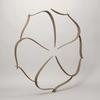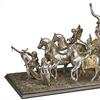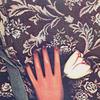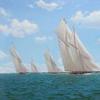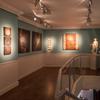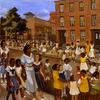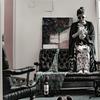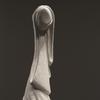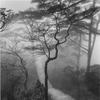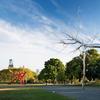'License to Deceive' Opens at Hirschl & Adler Galleries in June
- NEW YORK, New York
- /
- May 04, 2017
Hirschl & Adler Galleries will present its summer gallery exhibition, License to Deceive, from June 15 to August 18, 2017. With “alternative facts” dominating today’s news, this exhibition explores how trickery has captivated artists and delighted viewers throughout art history. Focusing on still life, landscape painting, sculpture, and the decorative arts from the 19th century to the present, License to Deceive will investigate ways in which artists make illusion and deception an integral part of their work.
The challenge to “fool the eye” goes back to the beginnings of Western art history. Pliny the Elder illustrated Zeuxis’ brilliance in a tale in which the ancient painter created an image of grapes with such accuracy that birds pecked at the fruit. Many artists have since followed in Zeuxis’ footsteps, displaying their technical prowess in works that offer the illusion of three dimensions in two. Hirschl & Adler is fortunate to specialize in a period of painting in which illusionistic still lifes flourished. Late-19th-century American still-life painters William Michael Harnett, John Frederick Peto, and George Cope entertained and amazed viewers with their trompe l’oeil illusions, which appear to break through the picture plane. This exhibition will feature choice examples from these trompe l’oeil masters, including Harnett’s The Smoker's Companions (1878) and Cope’s Harper's Weekly (1892). Working in the same era, the Philadelphia cabinetmaking firm of A. & H. Lejambre produced the extraordinary tables that will appear alongside these paintings. With inlaid metal, mother-of-pearl, and contrasting wood veneers, Lejambre weaves a spider and its web into the rosewood surface of the tabletop to create a playful and whimsical illusion. License to Deceive will also explore how such contemporary artists as Jeffrey Ripple and John Moore continue in this trompe l’oeil tradition today.
Hudson River School painters approached their landscape subjects with scientific exactitude. Sketching was an important part of their creative process as a means to study and record what they saw in nature for later adaptation and interpretation in studio easel paintings. The photographic precision of these landscape paintings suggests that they are unmediated replications of scenery and topography, but appearances can be deceiving. After a summer of travel, exploration, and sketching, Hudson River School painters would compose scenes in the winter back in their New York studios, combining views and details from different locations—as well as from their imaginations—to create fictional places that encompassed various aesthetic, political, or religious ideals. License to Deceive will present impressive examples of these composite landscapes, including John Kensett’s Catskill Mountain Scenery (1850), Frederic Church’s Sketch at Chimborazo (c. 1854), William Sonntag’s Dream of Italy (c. 1858–60), and Charles de Wolf Brownell’s Limestone Cliffs of Bolondron, Cuba (1860), and will explore this paradox in contemporary landscape painting as well.
Is it sculpture or painting? Photograph or drawing? Image or reflection? License to Deceive will present works that appear to be executed in one medium, but with closer inspection, reveal themselves to be in another. Artists in this exhibition create this play of media by using varied methods to produce diverse effects. In Sparingly Descends the Birches (2016), Andy Mister mimics the reproductive quality of a Xeroxed image in meticulously rendered carbon pencil drawings. While Mister’s work gives the illusion of being mechanically mass produced, he rewards the serious viewer with the secret of its handmade production. From a distance, two French Shellwork Still Lifes (c. 1820) appear be sumptuous dried-flower arrangements, when in fact they are entirely composed of shells and coral— the ultimate “sailor’s valentines”. Contemporary sculptor Larry Kagan created Magritte's Paradox (2012) by twisting and welding a rat’s nest of steel rods, which, when lit by a single beam of light, magically casts a shadow in the shape of a three-dimensional pipe. Kagan’s shadow pictures question accepted expectations of where the art lies. T
hese three categories of deception in art bring together a diverse set of artists from different eras, but all share a masterful understanding of material that enables the creation of thrillingly illusionistic objects. Some rely on the viewer to activate these works by realizing the deception, while others hope viewers will accept the work at face value. This summer, Hirschl & Adler challenges viewers to seek out the truth.
License to Deceive opens on Thursday, June 15 and runs through Friday, August 18, 2017. Located in the landmark Crown Building at the corner of 57th Street and Fifth Avenue, Hirschl & Adler Galleries’ summer hours are Monday through Friday, 9:30 am to 4:45 pm. Please note the entrance to the Crown Building has been moved around the corner to 3 West 56th Street. We apologize for any inconvenience.
Please visit our website at www.HirschlAndAdler.com for an online preview of the exhibition.


